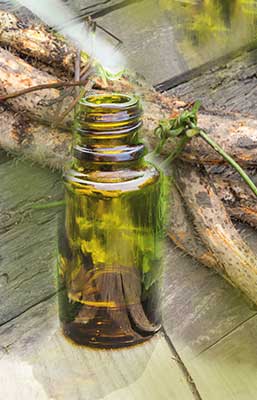Women who suffer from menopause symptoms have always looked for natural remedies to ease their discomfort. One of the remedies is wild yam root.
The plant is a perennial vine, but the part that’s used is the root. It is part of a huge Dioscorea genus, and the two species used to treat symptoms of menopause are native to China and North America. The root is nothing like the sweet potato, which is not a member of the genus. Wild yam is brown and dry, with a starchy taste that turns bitter as it’s chewed. The root is sought after for symptoms of menopause because it contains a phytoestrogen, or plant estrogen called diosgenin. Though it can’t be turned into estrogen and usually doesn’t behave like estrogen in the body, diosgenin can be converted into progesterone, another reproductive hormone. Progesterone prepares the uterus for pregnancy during the menstrual cycle. If pregnancy occurs, the levels of progesterone remain high to support it. If pregnancy doesn’t happen, the levels of progesterone and estrogen both drop, which leads to menstruation. Synthetic progesterone is combined with estrogen in hormone therapies used to ease the symptoms of menopause.
How It’s Used for Menopause Symptoms

The hormones in wild yam cream are thought to penetrate the skin, enter the bloodstream and affect the imbalance of hormones that lead to menopause symptoms. In one study, 23 women rubbed wild yam cream into their skin for three months to see whether or not it relieved their symptoms. They also took a placebo and kept diaries of their symptoms. Their body fluids were tested after three and six months and researchers saw no changes in progesterone, follicle stimulating hormone or estradiol. All of these hormones affect menopause.
Conclusions
The conclusion of the study was that there was a slight improvement in hot flashes and night sweats whether the women took the real wild yam cream or used the placebo. The researchers had to conclude that wild yam cream did not have much affect on the symptoms of menopause. However, they warn patients who have reproductive cancers such as ovarian, uterine or breast cancer or a condition such as uterine fibroids to avoid wild yam, for it might behave like an estrogen. There was also some indication that people with protein S deficiency are at higher risk of blood clots when they take wild yam. Protein S removes dying cells and helps prevent unnecessary blood clotting. Women who are on birth control pills should consult with their doctor before taking wild yam.
Side Effects
The good news about wild yam is that there seemed be no side effects by using it topically in otherwise healthy women. However, ingesting large amounts of the substance can lead to vomiting. There are as yet no studies on how wild yam interacts with other supplements or medications.


